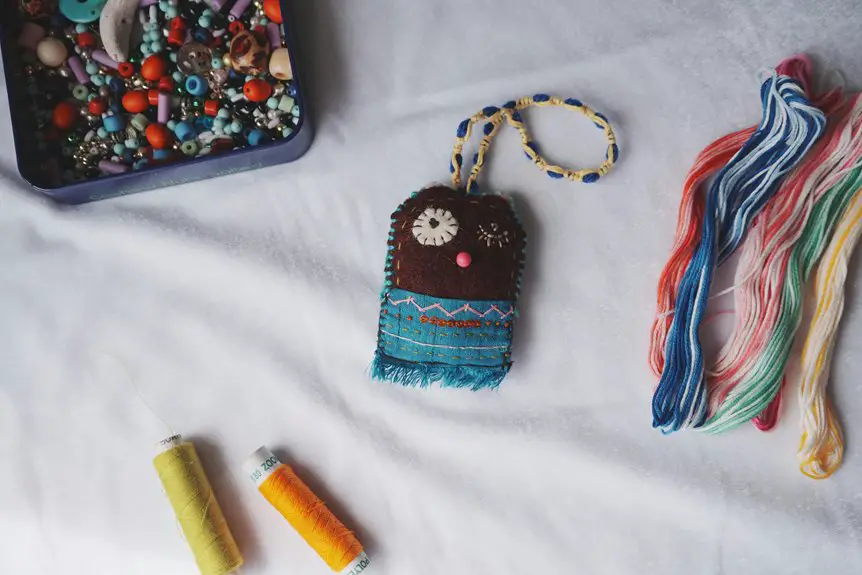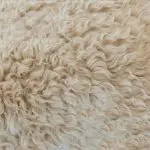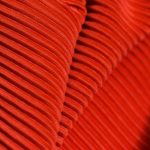When comparing velvet, fur, corduroy, and cotton, you’ll notice distinct differences in texture, durability, and care. Velvet has a plush pile and a glossy sheen but needs gentle cleaning. Fur feels warm and soft but raises ethical concerns and requires special maintenance. Corduroy is durable with raised ribs and easy care, while cotton is breathable, affordable, and simple to maintain. Understanding these contrasts helps you pick what fits your style and values—there’s more to discover about each fabric’s unique features.
Table of Contents
Key Takeaways
- Velvet features a smooth, dense pile with a glossy sheen, offering a luxurious feel, while fur provides thick, warm softness with natural luster.
- Corduroy has a durable, ribbed texture with a matte finish, contrasting with cotton’s lightweight, breathable, and smooth matte surface.
- Velvet and fur require delicate care and dry cleaning, whereas corduroy and cotton are more durable and suitable for gentle machine washing.
- Fur raises significant ethical concerns due to animal welfare, while cotton and synthetic blends used in velvet and corduroy have notable environmental impacts.
- Cotton is the most affordable and accessible fabric, corduroy is budget-friendly, velvet is higher-priced, and fur is the most expensive and limited.
Understanding the Origins and Production of Velvet, Fur, Corduroy, and Cotton
Although these fabrics differ vastly in texture and use, understanding their origins and production helps you appreciate their unique qualities.
Velvet, for instance, is woven on special looms that create its signature dense pile, often from silk or synthetic fibers.
Velvet’s rich texture comes from unique looms weaving dense piles, typically using silk or synthetics.
Fur comes from animal pelts, carefully tanned and treated to preserve softness and durability—something you won’t find in plant-based textiles.
Corduroy is made by weaving extra sets of fibers to form vertical ribs or “wales,” often using cotton or blends.
Cotton itself grows as natural fibers from cotton plants, harvested and spun into yarn.
Knowing these basics helps you see why each fabric feels and behaves differently, rooted in its distinct material source and crafting process.
Texture and Appearance Differences Among Velvet, Fur, Corduroy, and Cotton
You’ll notice each fabric offers a distinct surface feel that changes how it interacts with your skin.
The visual texture varies widely, from velvet’s smooth sheen to corduroy’s ribbed pattern and fur’s plush depth.
Understanding these differences helps you choose the right fabric for both comfort and style.
Surface Feel Comparison
When you run your hand over velvet, fur, corduroy, and cotton, each fabric reveals a distinct texture that shapes its overall appearance.
Velvet feels luxuriously smooth with a soft, dense pile that gives it a plush sensation. Fur, whether real or faux, offers a thicker, more tactile softness, often warmer and more voluminous under your touch.
Corduroy stands out with its raised ribs or wales, creating a firm yet slightly textured surface. Cotton, by contrast, feels light and breathable, with a smooth but matte finish that’s less dense than the others.
Each fabric’s surface feel not only affects comfort but also hints at how it will wear and drape, helping you choose the right material for your needs.
Visual Texture Variations
Because each fabric has unique structural elements, their visual textures vary noticeably to the eye.
When you look at velvet, you’ll see a smooth, dense pile creating a plush surface with subtle variations in shading.
Fur shows a natural, uneven texture with individual hairs catching light differently, giving it a rich, organic look.
Corduroy stands out with its distinctive parallel ridges or wales, offering a linear, tactile pattern that’s easy to recognize.
Cotton, by contrast, presents a flat and even texture with a matte finish, emphasizing simplicity and versatility.
Understanding these visual differences helps you choose the right fabric for your project, whether you want something soft and luxurious or structured and casual.
Fabric Sheen and Depth
Although each fabric offers unique texture, their sheen and depth play an essential role in defining their overall appearance.
When you choose between velvet, fur, corduroy, and cotton, understanding these visual qualities helps you pick the right fabric for your style.
- Velvet boasts a rich, glossy sheen that shifts with light, giving it a luxurious depth that catches your eye instantly.
- Fur has a natural luster and thickness, creating a soft, multidimensional look that feels warm and indulgent.
- Corduroy features a matte finish with raised ridges, adding subtle depth without much shine, making it casual but textured.
Cotton typically lacks sheen, offering a flat, straightforward look that’s versatile but less visually dynamic than the others.
Durability and Wearability Comparison
You’ll want to contemplate how each fabric holds up over time and how comfortable it feels during wear.
Some materials require more care to maintain their look and texture.
Let’s explore which fabrics offer the best balance of strength, comfort, and easy upkeep.
Fabric Strength and Longevity
Fabric strength plays an essential role in determining how long your clothing or upholstery will last under regular use.
When choosing between velvet, fur, corduroy, and cotton, understanding their longevity helps you make smarter decisions.
- Velvet offers moderate strength; it’s durable but can wear thin with heavy friction.
- Fur, especially real fur, tends to be strong and resilient but requires careful handling to maintain longevity.
- Corduroy features tightly woven fibers that make it highly durable and resistant to wear over time.
- Cotton is generally strong but varies depending on the weave; high-quality cotton can last long, while cheaper versions might wear out faster.
Knowing these differences guarantees you pick fabrics that meet your durability needs and stand the test of time.
Comfort and Maintenance Needs
When choosing between velvet, fur, corduroy, and cotton, you’ll want to contemplate not just durability but also comfort and maintenance.
Velvet feels soft and luxurious against your skin but demands gentle care, often needing dry cleaning to keep its plush look.
Fur offers warmth and comfort but requires specialized cleaning and can shed over time.
Corduroy is durable and comfortable, providing a cozy texture that’s easy to maintain with regular washing, though it may fade or wear unevenly.
Cotton stands out for breathability and ease of care—you can machine wash it without hassle.
Ultimately, consider how often you’ll wear the fabric and your willingness to follow specific care routines to keep your garments looking and feeling their best.
Care and Maintenance Requirements for Each Fabric
Although each fabric brings unique qualities to your wardrobe, their care and maintenance differ considerably.
To keep your velvet, fur, corduroy, and cotton looking great, follow these tailored tips:
- Velvet requires gentle cleaning—use a soft brush to maintain its pile and opt for dry cleaning to avoid crushing the fabric.
- Fur demands special attention; store it in a cool, dry place and avoid exposure to heat or moisture. Professional cleaning is best to preserve its texture.
- Corduroy benefits from machine washing on a gentle cycle and inside out to protect the ribs. Avoid high heat drying to prevent shrinkage.
- Cotton is the easiest to care for—wash in warm water, and it typically withstands regular machine drying without damage.
Common Uses and Applications in Fashion and Home Decor
Since each material offers distinct textures and durability, you can choose velvet, fur, corduroy, or cotton to suit specific fashion styles and home decor needs.
Velvet’s plush surface makes it ideal for elegant evening wear, luxurious upholstery, and decorative pillows. Fur adds warmth and sophistication, often used in coats, hats, and cozy throws.
Corduroy’s ribbed texture shines in casual clothing like jackets, pants, and skirts, plus durable cushions or curtains. Cotton stands out for versatility—perfect for everyday apparel, bedding, and slipcovers due to its breathability and softness.
When selecting fabrics, consider where and how you’ll use them. Velvet and fur elevate formal styles and accent pieces, while corduroy and cotton offer comfort and practicality for casual wear and functional home items.
Environmental Impact and Sustainability Considerations
Choosing the right fabric goes beyond style and function; it also impacts the environment. When you select between velvet, fur, corduroy, and cotton, consider these sustainability factors:
Selecting fabrics like velvet, fur, corduroy, or cotton involves thoughtful consideration of their environmental and ethical impacts.
- Resource Use: Cotton requires vast water and pesticides, while velvet and corduroy (often made from cotton or synthetic blends) inherit those impacts.
- Fur involves animal farming, which has high land and resource demands.
- Biodegradability: Natural fibers like cotton and fur break down more easily than synthetic velvet or corduroy blends, reducing landfill waste.
- Ethical Concerns: Fur raises serious animal welfare issues, whereas plant-based cotton and synthetic fibers pose fewer ethical dilemmas but differ in environmental footprints.
Cost Factors and Accessibility of Velvet, Fur, Corduroy, and Cotton
When weighing your options between velvet, fur, corduroy, and cotton, understanding their cost factors and accessibility can help you make smarter purchases.
Velvet often comes with a higher price tag due to its complex weaving process and luxurious appeal. Fur is usually the most expensive, given ethical concerns and limited availability.
Corduroy offers a budget-friendly choice, widely accessible and durable, making it popular for everyday wear. Cotton stands out as the most affordable and easily found fabric, produced in large quantities worldwide.
If you’re on a tight budget, cotton or corduroy will serve you well. However, if you want something elegant and don’t mind spending more, velvet or fur might be worth it.
Your choice ultimately depends on your priorities and budget constraints.
Frequently Asked Questions
Can These Fabrics Trigger Allergies or Skin Sensitivities?
Ever felt itchy after wearing certain clothes? You might be sensitive to fabrics like fur or velvet, which can trap allergens. Cotton usually causes fewer reactions, but everyone’s skin reacts differently, so always test before wearing.
How Do These Fabrics Respond to Different Climate Conditions?
You’ll find velvet and fur trap heat, making them ideal for cold climates. Corduroy offers moderate warmth, while cotton breathes well, keeping you cool and comfortable in hot, humid conditions.
Are These Fabrics Suitable for Children’s Clothing?
When it comes to children’s clothing, you can’t judge a book by its cover—cotton’s breathable and soft, perfect for comfort. Velvet, fur, and corduroy can be warm but might irritate sensitive skin or restrict movement.
What Are the Historical Fashion Trends Involving These Fabrics?
You’ll find velvet was popular in royal garments, fur symbolized luxury, corduroy gained favor in workwear, and cotton became a staple due to its versatility and comfort, shaping fashion trends across centuries.
How Do These Fabrics Perform in Athletic or Performance Wear?
When you move, your clothes should breathe like the wind. Cotton wicks sweat well, keeping you cool. Velvet, fur, and corduroy trap heat, so they’re better for style, not sweaty workouts or intense athletic wear.
- A Practical Guide to Using Nonwoven Geotextiles - July 11, 2025
- Everything You Should Know About Nonwoven Wallpaper - July 11, 2025
- Woven vs. Nonwoven Bags: Which Is the Greener Choice? - July 11, 2025







